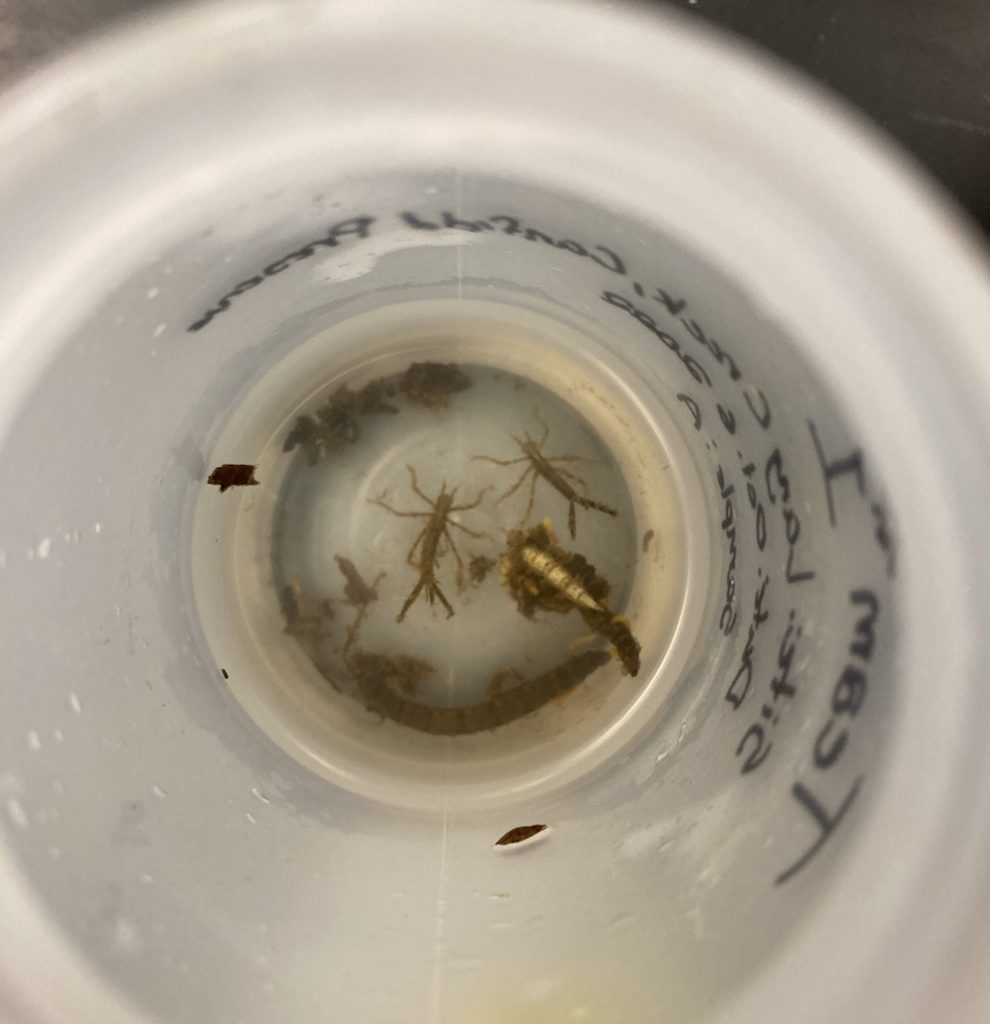Contact: Shannon O’Leary (Saint Anselm College, NH), Elizabeth B. Sudduth (Georgia Gwinnett College, GA), Patricia A. Saunders (Ashland University, OH)
Project E-mail: invurts@gmail.com
Initiated: 2023
Project Status: Pilot-testing methods in Fall 2024. Recruiting new participants for Fall 2024 and beyond.
- Here is a recording of our August 2023 information meeting. Here are the slides.
- Ready to participate in the INVURTS project? This form asks for a little more information.
Description
Investigations with NEON: Variability of macroinvertebrates versus Urban and Rural Temperature dynamics in Streams (INVURTS)
 Inspired by a previous EREN project that investigated the effect of riparian forest cover on stream temperature (Simmons et al. 2015), we are investigating the interactions of temporal variability of stream temperature and climatic (biome) and land-use effects on aquatic macroinvertebrate communities. To assess potential trends and interactions at this broad spatial scale, we plan to combine data from sites in the NEON network and sites at participating institutions.
Inspired by a previous EREN project that investigated the effect of riparian forest cover on stream temperature (Simmons et al. 2015), we are investigating the interactions of temporal variability of stream temperature and climatic (biome) and land-use effects on aquatic macroinvertebrate communities. To assess potential trends and interactions at this broad spatial scale, we plan to combine data from sites in the NEON network and sites at participating institutions.
See a map of our current sites and the NEON network here.
Hypotheses/Objectives:
- Hypothesis 1 (Intermediate Disturbance Hypothesis): More extreme (high or low) daily/seasonal/annual temperature variability may decrease biodiversity of stream macroinvertebrates due to species’ limits, therefore, highest biodiversity is expected at sites with predictable intermediate levels of variability.
- Hypothesis 2 (Urban Stream Syndrome): Stream macroinvertebrate biodiversities in urban streams are more similar to each other across NEON Domains than to other sites within a NEON Domain, because as urban streams become more homogenized in their physico-chemical characteristics, including temperature regime, they become more similar in their community composition.
- Hypothesis 3 (Thermal Equilibrium Hypothesis): An optimum equilibrium between temperature & growth exists; therefore, populations of a species at suboptimal sites are expected to exhibit low population density and smaller individuals versus more optimal sites.
Summary of Methods:
To test these hypotheses, participants will:
- collect year-round in situ temperature data in a wadeable stream
- do habitat assessment survey
- Gather biological data (environmental DNA and/or specimen collection)
- sample and identify aquatic macroinvertebrates during Spring, Summer, and/or Fall sampling windows.
- collect and filter water samples for extraction of environmental DNA (eDNA) to characterize the macroinvertebrate community using metabarcoding.
Expanded Project Info.
Project protocols:
- logger installation protocol
- habitat/site assessment protocol and data sheet
- macroinvertebrate sampling protocol and data sheet
- eDNA sampling and processing protocol
Curriculum:
- Overview for Instructors
- Instructor Materials and Student Handouts include:
- Macroinvertebrate sampling
- Organizing, archiving and submitting data to the project
- Suggestions for using INVURTS with classes
- Stay tuned for specific teaching modules on:
- the effect of temperature variability shaping habitat availability
- characterizing and comparing macroinvertebrates based on feeding groups
- characterizing and comparing local habitat and watershed using StreamStats
- using metabarcoding to characterize biological communities
Publications will be shared here as available.
